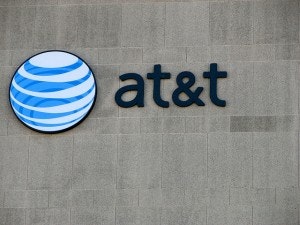Dividend growth has been fast over the last three years according to WisdomTree. It has built an index and associated ETF to capture that growth. However, WisdomTree’s own numbers show that an index of companies with long histories of dividend increases outperforms. Only dividend increases aren’t a sure sign of a winner.
Slicing and dicing
WisdomTree’s director of research Jeremy Schwartz recently released a report highlighting dividend growth. The only problem is that WisdomTree’s numbers tell a good story that supports companies with long histories of dividend increases. Indeed, the S&P High Yield Dividend Aristocrats Index was the better long-term performer. That index requires 20 years of dividend increases for a stock to be included.
Fast dividend growth is nice to see, but consistent growth appears to be the better long-term bet. However, that doesn’t mean that investors should blindly buy companies with long histories of dividend increases either.
In fact, Schwartz explained that recovering dividends in the finance sector was a prime reason for the recent dividend growth he highlighted. Finance was once considered a cornerstone of dividend investing until the financial crisis led to sector-wide cuts. So, before you go and start buying stocks from a dividend index, consider these three stocks:
A problem child
Pitney Bowes Inc. (NYSE:PBI) is best known for its postage meters. With decades of annual dividend increases behind it, it was a long time member of the Dividend Aristocrat list. Selling postage meters, however, has been a rough business since electronic communications are quickly replacing physical ones.
The stock’s yield is a reasonable 5% or so; that’s down from its previous level of around 10%. Unfortunately, a 50% dividend cut is the reason, not a huge run up in the shares. When the S&P index is next reconstituted Pitney Bowes Inc. (NYSE:PBI) should drop out.
The cut was pretty much telegraphed when the company brought in a new CEO and then decided not to increase the payout at the regular annual interval. Clearly, the board was letting the CEO get the cut out of the way early in his tenure instead of forcing him to backtrack on an increase. These types of actions are a warning sign for dividend investors (the same thing happened at Avon).
Stuck in a still struggling industry, Pitney Bowes Inc. (NYSE:PBI) is best avoided. It is also a good warning that a long history of dividend increases isn’t a lock on future dividend hikes.
A better transition

Revenue has been on a fairly steady upward climb over the last decade and is largely annuity-like. Earnings have been volatile, but soundly in the black. Although the company’s earnings didn’t cover its dividend last year there shouldn’t be too much concern. Dividends are paid out of cash flow, which adds back in such non-cash items as depreciation. AT&T Inc. (NYSE:T)’s business means it has lots of depreciation and, thus, can handily afford the dividend. Moreover, it is successfully transitioning to newer technology, unlike Pitney Bowes Inc. (NYSE:PBI).
Good but pricey
HCP, Inc. (NYSE:HCP) is among the largest and most diversified health care real estate investment trusts (REITs) in the country. Acquisitions have led to solid growth in recent years. It is well run and provides exposure to just about every health care property class out there. It’s a one-stop shop for REIT investors.
No matter what happens to the health care industry, people will need a place to go to be healed. That fact makes the company, and its dividend, pretty resilient. With the aging of the baby boomers, it is highly likely that HCP, Inc. (NYSE:HCP) will see continued growth for years to come. That said, HCP is so large that growth from here is likely to slow.
HCP’s yield is a miserly 4% or so. That’s on the low side of the sector because of the company’s impressive operating history. There is no question that HCP, Inc. (NYSE:HCP) is a great company, but at recent yield levels it isn’t as compelling an investment as it once was. This is the type of company to keep on a watch list waiting for a broad market pull back to bring the yield into the 6% to 8% range.
Long histories
When it comes to dividends, Pitney Bowes Inc. (NYSE:PBI) shows that even a long history of dividend increases doesn’t guarantee anything. Taking a close look at the underlying business is still vital. AT&T Inc. (NYSE:T), for example, has been more adept at shifting to new technology. That makes the telecom giant a solid option. Then there are great companies that have been bid up so far that investors should probably sit on the sidelines waiting for a pullback. HCP is such a business.
The article Dividends Aren’t a Sure Sign of Success originally appeared on Fool.com and is written by Reuben Brewer.
Copyright © 1995 – 2013 The Motley Fool, LLC. All rights reserved. The Motley Fool has a disclosure policy.